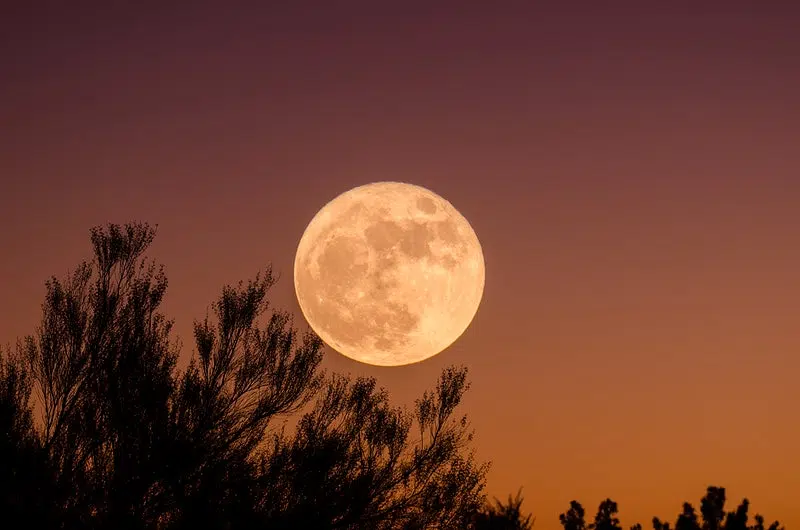
Table of Contents
Introduction
Supermoon On August 1, 2023, at 2:32 PM EDT, millions of eyes were drawn skyward as the celestial stage unveiled a breathtaking cosmic event – the Super moon. This astronomical spectacle, also known as the Perigean Full Moon, occurs when the full moon coincides with its closest approach to Earth, known as the perigee. The result is a visually stunning lunar display, appearing larger and brighter than the typical full moon. This occurrence is an enchanting sight for both seasoned astronomers and casual observers alike, capturing the imaginations of people across the globe.
Understanding the Supermoon Phenomenon
The Super-moon phenomenon is a fascinating consequence of the Moon’s elliptical orbit around Earth. The moon’s distance from our planet varies throughout its orbit, and its closest point, the perigee, can bring it as close as approximately 356,000 kilometers (221,000 miles). Conversely, its farthest point, the apogee, can extend to around 406,000 kilometers (252,000 miles).
When a full moon coincides with the perigee, as it did on August 1, 2023, it appears approximately 14% larger and 30% brighter than a full moon at its apogee. This striking visual effect captivates audiences and has earned the term “Super moon” due to its majestic and awe-inspiring presence in the night sky.
The Science and Impact of Supermoons
While Supermoons are visually spectacular, their scientific impact is relatively modest. The gravitational pull of the Moon does affect Earth’s tides, and during a Super moon, tides can be slightly higher than usual, known as “perigean spring tides.” However, the difference is generally negligible, and any potential effects on our planet’s natural systems are minimal.
Moreover, the Supermoon has no discernible influence on human behavior, despite occasional misconceptions to the contrary. Scientific studies have consistently failed to establish a correlation between lunar phases, including Supermoons, and human activities such as hospital admissions, crime rates, or psychiatric occurrences. Thus, the Supermoon remains a fascinating and visually captivating astronomical event, but its impact on our daily lives is primarily limited to awe and wonder.
The Cultural and Historical Significance
Throughout history, the moon has played a vital role in shaping human culture, mythology, and spiritual beliefs. The Supermoon, with its larger-than-life presence, has often been associated with auspicious events, portents, and myths across various civilizations.
In ancient times, people regarded the Supermoon as a symbol of fertility, growth, and prosperity. Ancient agricultural societies timed their planting and harvesting activities with lunar cycles, including Supermoons, believing they could harness the moon’s energy for more abundant crops.
The moon’s influence is also apparent in numerous legends and folklore from different cultures. For instance, in Norse mythology, the moon was associated with Mani, the god of the moon, who rode the night skies. In East Asian cultures, the moon was revered as a symbol of beauty and grace, often depicted in art and poetry.
A Photographer’s Paradise
The Supermoon is a dream come true for photographers, both amateur and professional. Its larger size and increased brightness allow for stunning lunar photography opportunities. Photographers around the world eagerly anticipate these events, preparing to capture the moon’s radiant glow against various landscapes, landmarks, and cityscapes.
For the best results, photographers use long lenses to capture the moon’s intricate details, such as its craters and maria (dark plains). They also experiment with different exposures to balance the moon’s brightness with its surroundings, creating breathtaking compositions that convey the moon’s enchanting allure.
Stargazing Events and Public Engagement
The Supermoon of August 1, 2023, brought people together through stargazing events organized by astronomy clubs, observatories, and planetariums worldwide. These gatherings provided an opportunity for both astronomy enthusiasts and the general public to witness the celestial wonder together, fostering a sense of curiosity and appreciation for the cosmos.
Stargazing events often include educational talks and activities related to astronomy, moon exploration, and space missions. The Supermoon serves as a gateway to spark interest in other celestial phenomena, such as meteor showers, eclipses, and planetary conjunctions.
Conclusion
The Supermoon of August 1, 2023, was a captivating celestial event that captivated the hearts and minds of people around the world. With its larger-than-life appearance and radiant brilliance, the Supermoon continues to inspire wonder and awe, reminding us of the vastness and beauty of the cosmos.
Though its scientific impact may be modest, the Supermoon’s cultural and historical significance endures, connecting us to our ancestors and their celestial beliefs. As we marvel at the moon’s splendor, we are reminded of our place in the cosmos and the continuous dance between the Earth, Moon, and Sun.
The Supermoon is a reminder of the wonders that await us in the night sky, urging us to continue exploring and understanding the mysteries of the universe. As we eagerly await the next Supermoon, let us cherish these celestial moments and embrace the beauty that surrounds us both on our planet and beyond.

